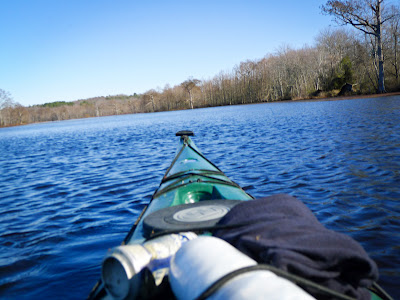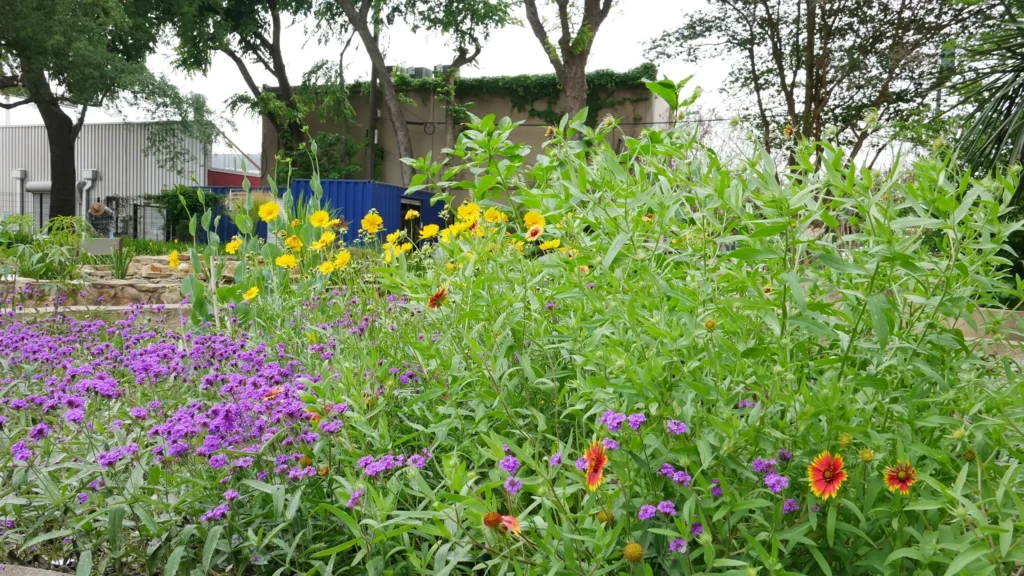Currently on display in the Artist Hall is the exhibition, Alyssa Salomon — The Handmade Print. Salomon’s works are stunning examples of contemporary photography that use 19th-century photographic processes as well as handmade surfaces. She uses Van Dyke printing, Cyanotype printing, and is a member of the international artist community of the Contemporary Daguerreotype.
Her work in the two series, Tell me again, The World Will Be Beautiful and Mind’s Eye, provides us with more than just a glimpse into the natural world. She hopes to evoke a sense of nostalgia, to “recall an abundance of sights seen, held dear, and linked by recollection — scenes gathered through binoculars and focused eye, from shore and balcony, beyond the fence and within one’s garden.”
When I was unpacking these works and, as I pass by them every day, I am repeatedly struck by the artists’s representation of the often forgotten or overlooked pure and intrinsic beauty of nature, which is always surrounding us. These images are fleeting moments of the human experience. She demonstrates a unique way to view the trees, the birds on the telephone wires, the sea gulls circling overhead and our place within this natural world.
In the excitement surrounding having Alyssa in town this weekend to teach an alternative photographic processes workshop at the Museum of Printing History, I wanted to find out more about her work to share with our readers.
On your website, you said you’ve been taking photos since you received a camera on your eighth birthday, but when did you start experimenting with 19th century photographic processes? What was it about these antique processes that enticed you to explore them further?
I had pretty much used the same silver-gelatin paper brand and just a couple film stocks over two decades until 2000, when in expanding a body of work that mined the visual language of vernacular photographs, I learned to make daguerreotypes, first in a Penland class with Jerry Spagnoli, and later as an apprentice to Robert Schlaer. The experience of seeing the world rendered in an unexpected photographic form and the compelling photographic objects that the process produced changed my studio practice. 19th century handmade photographic processes gave me brilliant tools to retell the world through photography. And my successes with the complexities and subtleties of the daguerreotype process made me fearless.
Can you explain how you relate and compare your studio practice to the realm of contemporary craft?
I see my studio practice with handmade photographic processes as part of significant currents within contemporary craft and material studies, particularly the exploration of materials and intentionality around the process. I use photographic printmaking the way a metalsmith might approach the fabrication of jewelry: everything is fair game as material and structure. My images are objects that result directly from their parts and methods. While process, for me, is important and necessary, it is not sufficient; process gives me tools for rendering for the viewer a sensory experience that embodies the physical delights of locating ourselves in the natural world. The capacities of light-sensitive compounds and the properties of paper provide voice to speak of the energy of the oceans, the blue of the sky, and the entrancement by birds. Ordinary and wondrous phenomena are my means and my subject.
Can you briefly explain to us your creative process, starting with the way in which you capture your photos?
My process is much like that of a birdwatcher in the field: disciplined by skill, attuned to sight, and gifted by chance. But my purpose is to render the reality of the mind’s eye rather than the truth of the eye. My images begin with a lens, but are realized through the properties of printing process. Each unique picture is crafted with photographic chemistries, light, and hand work. I mix my photographic solutions from basic compounds, brushing them on handmade and fine papers to produce light-sensitive surfaces on which negatives are exposed. The final images, with velvety surfaces inherent to the van dyke and cyanotype methods and intensified with wax, are more like drawings than photographs, more like memories than documents.
In examining the roots of my infatuation with the natural world and with elemental photochemistry itself, I realized I owe much to an undergraduate education in the writings of British Romantic poets, and eighteenth- and nineteenth-century English and French social history. A number of my titles are drawn from William Wordsworth’s poem, Tintern Abbey, which lays out a rich detailing of landscape and the transcendence of recollection. Other titles in this body of work come either from Charles Wright’s book of poems, A Short History of the Shadow, or from my imagination.
For the viewer, I hope these artworks together recall an abundance of sights seen, held dear, and linked by recollection — scenes gathered through binoculars and focused eye, from shore and balcony, beyond the fence and within one’s garden.
What aspects of the world we live in have inspired you to create this work you think of as a call “to inactive action”?
Pervading the work is a celebration of beauty and its pursuit. In our consumer culture of throw-away imagery, environmental anxieties, financial turmoil, and unsettling political discourse, the contemplation of untamed beauty is essential to living life richly amidst the manmade. This project invites the viewer to inactive action: to sit, to see, to acknowledge the accumulation of sensory experience, and to reminisce.
Why is using handmade paper significant to your work? How do you choose what papers to use, and where do they come from?
Beginning to work with handmade paper was a revelation, but in hindsight it seems so obvious. The processes I use — and the iconic images I use to create them — are so basic that each component has a significant impact. With these handmade photographic processes — cyanotype, van dyke, salted paper — one has the light-sensitive emulsion one mixes from a few simple compounds, the paper it goes on, the brush, the light, and the negative or other material used to shape the light as it strikes the light-sensitive paper. Much like cooking with only a few ingredients, the character, flavor and quality of each has a major impact on the outcome.
Amazing paper is being made these days — I’m lucky to have used a lot of paper made by Helen Hiebert, leftovers from Dieu Donne’, and a few sheets made by Anne Marie Kennedy. The marble, Steve Pittelkow, gave me a couple of dozen sheets, which were the last of his archives of paper he had made and collected over the decades. I’ll try anything — you never know until you experiment what a paper can do, what the attributes of the paper will bring to the final image — surface texture, color, sizing, fiber content. A paper’s reactions with the photochemistry all affect the crispness, tone, detail, and value range of the image. Paper that is pigmented means the image doesn’t have white but is whatever color the paper is (pink, green, orange) and whatever the photographic chemistry is (blue with cyanotype, brown with van dyke). The fiber content and sizing impact hue of the chemistry. There is a wonderful heavyweight kozo stocked by the photochemical supply house, Bostick & Sullivan, that I’ve been using for crisp images recently.
What are you most looking forward to during your visit to Houston?
Working with the creative community that surrounds HCCC & the Museum of Printing History is a great opportunity. As a landscape, Texas and Houston are very unlike where I live — an ancient cypress swamp in an agricultural county outside Richmond, which is a small, East Coast city distinguished by small-scale, late-19th- and early-20th-century architecture. I’m looking forward to the visual rush and disorientation that happens in looking at and negotiating the unfamiliar. And, of course, coming to Houston during Fotofest is a great opportunity — how wonderful to be part of the outpouring of photographers and photography enthusiasts amid a photography extravaganza.

"A couple of snapshots that I've taken by kayak of where I live. We moved here five years ago after decades of urban life--with the intention of making the amazing and wild part of daily life and vision." Alyssa Salomon. The workshop, Master Alt Photo Workshop with Alyssa Salomon: “The ABCs of Alternative Photographic Processes” takes place Saturday, March 17, 10:00 AM – 4:00 PM at the Museum of Printing History. The workshop is sold out. Participants will make cyanotype and salted-paper prints, two of the easiest, earliest and loveliest 19th-century photographic processes.
For more information about the artist, click here.


